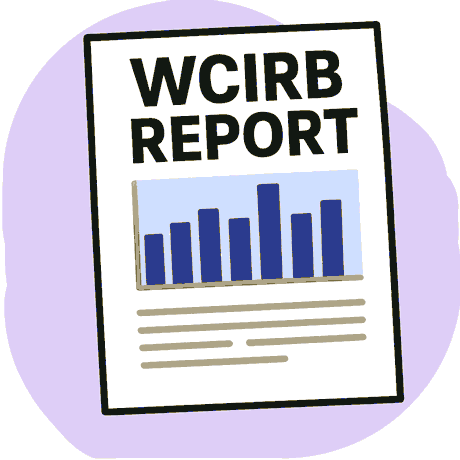WCIRB's "Industry Stats" Report: Unverifiable, Outdated Data

California’s Workers’ Compensation Insurance Rating Bureau (WCIRB) is at it again, releasing a “new” report full of questionable, outdated, insurer-provided data that no outside observer can verify.
WorkCompWire reports that the WCIRB unveiled its 2025 Interactive Industry Stats Report with “detailed premium, exposure and loss data.” The report features a “user-friendly, spreadsheet-based interface” to filter the data by sector, claim type, and more.
…but if you’re expecting high-value insights or a window into recent trends, prepare to be disappointed.
While a data lag is not unusual in workers’ comp reporting, this “2025” report includes data only through 2022. The data come from insurers’ “unit statistical reports” (filings of payroll, premiums, and claims submitted about 18 months after a policy begins and then updated annually), presumably filtered through the WCIRB’s in-house “quality” assurance mechanisms.
In other words, the data are news from three years ago, and about as independently verifiable as a middle-school lunchroom rumor.
The report exists for one reason only, because the WCIRB exists for one reason only: to push insurers’ preferred narrative that workers’ comp costs are out of control. It’s all part of the same tired strategy to use skewed “data” to pressure state regulators into raising workers’ comp premiums on California employers, who already pay some of the highest rates in the country.
In 2025, those California premiums are rising again even as most other states are seeing declines.
WCIRB Won’t Back Its Own Report
For all the tabs, sheets, and sorting options the Stats Report offers, the only thing workers’ comp stakeholders need to know is in the report’s “Data Elements” section, which states (emphases and line breaks ours):
“The data in this report reflects historical information provided by the WCIRB's members and others and does not in any way represent the WCIRB's views, opinions or recommendations concerning the proper use of the data or this report.
The WCIRB specifically disclaims all representations and warranties, whether express or implied, with respect to the accuracy, completeness, reliability or quality of any information provided herein.”
Translated from the legalese: the WCIRB states that while the report is full of interesting numbers, the organization won’t stand behind them, choosing instead to distance themselves from any potentially meaningful conclusions.
The data came from WCIRB members “and others” (nothing mysterious there) and may or may not be accurate, complete, reliable, or of any particular quality. If the WCIRB has any “views, opinions, or recommendations” (like rate hikes), this report does not represent them in any way.
Just the kind of rock-solid “research” to base state policy on!
CA Needs Current Data Stakeholders Can Trust
The “Data Elements” disclosures in the Stats Report are perfectly in line with other WCIRB publications, which always feature some version of its “We can’t vouch for any of this stuff” caveat.
In report after report (like its annual State of the System report, shown below), the WCIRB reminds readers (in the fine print) that it won’t stand by the (out-of-date) data it uses to bemoan rising “medical” expenses and push for higher rates.
What, then, is the value of these data? Policymakers relying on WCIRB’s report are left with (obsolete) data the bureau itself refuses to endorse.
As we continue to remind readers, the state has abdicated its duty to collect current data on workers’ comp claims, leaving a convenient vacuum for the WCIRB to fill.
Every day since 2016, the California Division of Workers’ Compensation (CA DWC) violates state law by failing to collect treatment utilization data and declaring that submitting mandatory data to the Workers’ Compensation Information System is “voluntary” for payers.
As a result, California has no verifiable figures to analyze, let alone use to identify systemic problems and discover solutions. We have only the WCIRB and the reports it’s happy to release into the public conversation, but is apparently incapable of fully accounting for.
daisyBill gives providers fast payment, administrative relief, and visibility into workers’ comp revenue. Click below to see more:
THE DAISY DIFFERENCE
DaisyBill provides content as an insightful service to its readers and clients. It does not offer legal advice and cannot guarantee the accuracy or suitability of its content for a particular purpose.
.gif)





.gif)